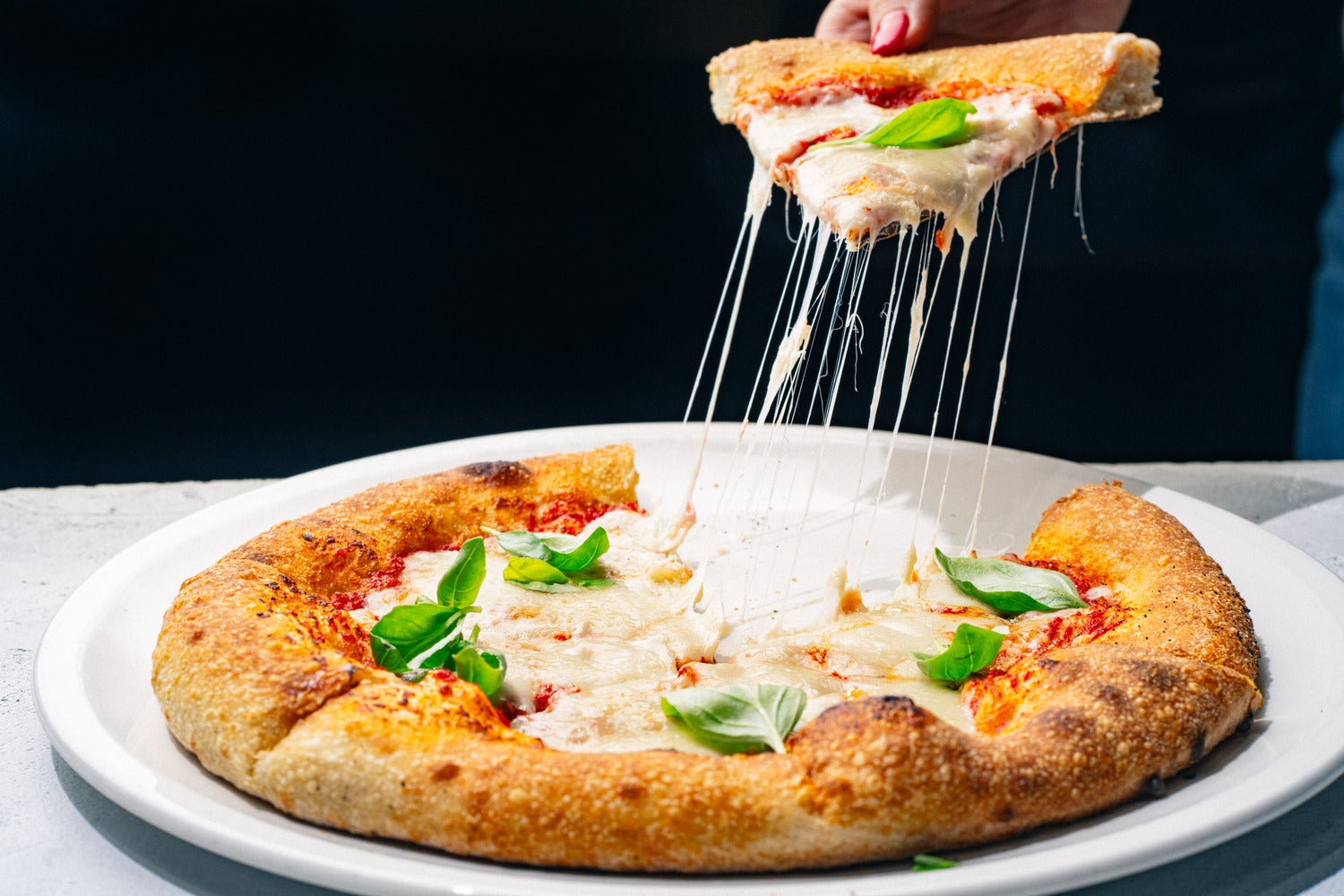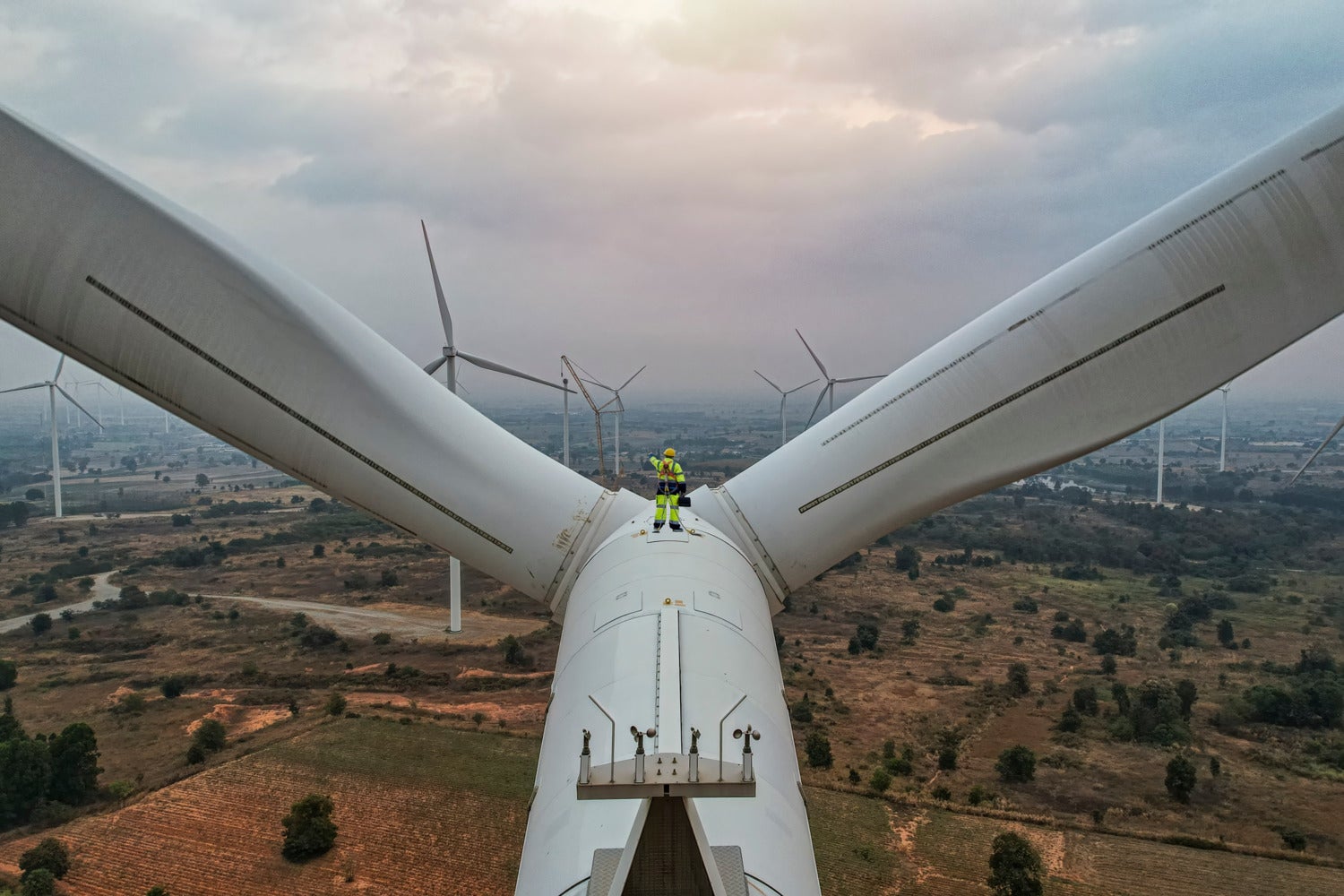Hey team, and welcome back to one5c! If you’re anything like me, you can find imperfection paralyzing. Ask anyone who’s watched me try to learn a new card game or step out of my comfort zone at the gym and they’ll tell you how truly, epically bad I am at not being good at something. There are a lot of great things about working at one5c—that whole saving-the-world feeling is pretty rad—but for me probably the biggest piece of personal growth has been learning that it’s OK to not be perfect.
For my money, spending the day exploring climate solutions is the absolute best lesson anyone can have in accepting that progress comes with imperfection. No piece of climate tech or morsel of plant-based food is without its caveats—as the look contributor Tyler Santora takes into the world of derelict wind turbine blades shows. Once you understand that, it becomes easier to give yourself a little grace in your day-to-day, and strike the balance that helps us do better. —Corinne
SPONSOR

Restore the Planet, One Mission at a Time
The responsibility to protect our planet falls on all of us. Planet Wild is a community of nature lovers pooling their contributions to fund efficient projects that save animals, oceans, and forests. And you can join them. Each month, your contribution will help fund a targeted nature revitalization mission where it’s needed most. With monthly videos, you’ll even get to see the impact you’re making.
The first 150 people to sign up via the link (coupon code automatically applied) will receive the first month for free as a special offer from us.
WHAT WE’RE INTO THIS WEEK
By Sara Kiley Watson

Good read
The art of a convincing plant-based cheese
For dairy lovers, stepping away from the cheese boards can be the hardest part of shifting to climate-friendly eating—even when we know just how troublesome dairy is for the planet. Cheese has more world-warming potential than pork and poultry. A recent Grist feature from Caroline Saunders (one of our favorite planet-focused food writers) takes a look at a pair of companies attacking the challenge of deceptively delicious animal-free cheeses from totally different angles. One group, New Culture, has created a mozzarella so convincing that James Beard Award–winning chef Nancy Silverton has featured it on the menu of her famed Los Angeles pizza joint.
Cause for optimism
A big leap in energy storage hits the Lone Star State
The ability to store excess energy is an essential piece of a resilient renewable energy supply. It’s also a huge challenge. But a first-of-its-kind energy storage project from Sage Geosystems is coming to Texas, this time utilizing our planet’s own heat to hang on to that extra juice. The facility will use what’s called a geopressured geothermal system, which works by storing excess energy in underground wells. Water gets pumped deep into fractures that store energy as pressure. Once demand pops back up, the water is released, the force spins a turbine, and voilà, more electricity. Sage Geosystems is still in the process of applying for permits, so it’s unclear exactly when the three-megawatt storage system will be fully operational.
Action alert
Climate misinformation finds power in numbers, but so can action
When you hear something over and over again, it starts to feel more true—even if it definitely isn’t. Or at least that’s what a team of Australian and American scientists found in a study published earlier this month in PLOS One. Their research focused on climate misinformation, which they discovered is especially potent thanks to a phenomenon called the illusory truth effect, in which mere repetition of a less-than-honest statistic or take can make it seem more factual. This truth-creep is even true for people who understand the facts of climate science. Luckily, there is something we can do, and that’s to continue to talk about the facts when we encounter bunk information. The counterargument to making a dent in this particular denial is simple: More than 99.9% of scientists agree that climate change is human caused.
Consume this
HBO’s Industry takes on ESG
Is it possible to do right by the planet while making a ton of money? This question is at the center of the third season of HBO’s series Industry, which follows young financiers at a fictional London investment bank. This season brings in Game of Thrones star Kit Harrington as the CEO of a renewable energy company and takes a look at environment, social, and governance (ESG) investing—which has also been getting some side-eye in the real world. We here at one5c love to see potential greenwashing antics get their comeuppance (be they from fossil fuel giants, the financial industry, or even your favorite clothing brand) so we’re ready to pop some corn and see how this IRL drama gets adapted on the small screen.
MIC-DROP CLIMATE STAT
1.8 mil. metric tons
The carbon emissions from food waste avoided thanks to food banks in 2023, according to a recent report. That reduction is equivalent to taking more than 425,000 cars off the road.
ACCOUNTABILITY CHECK
What do we do with old wind turbines?
By Tyler Santora

Wind turbines are fantastic sources of renewable energy, providing 10% of U.S. electricity and about half of all the country’s renewables. But when they reach the end of their 20- to 25-year lifespan, their blades mostly end up in landfills or deep storage. That might not seem like a big deal, until you realize that 1) the blades can be longer than a Boeing 747 wing, 2) there are currently 3,000 to 9,000 blades getting decommissioned each year in the U.S., and 3) that number’s set to jump to 10,000 and 20,000 a year through 2040.
Remember, though: Turbine blades are a mere percentage of a percentage of all the waste dumped in landfills. But with a mission of sustainability, wind energy companies and independent researchers are searching for ways to recycle or repurpose all those spent spinners.
What happens to old wind turbines
The main body of a wind turbine, made up of materials like steel, copper, and aluminum, is easily recyclable. The blades are another story since they are made of a difficult-to-separate mix of fiberglass and resins, which until recently couldn’t be recycled at all.
So, decommissioned blades are usually trashed—if they can even make it to landfills. Because they’re so large, they’re incredibly difficult to transport. And breaking them into smaller pieces requires gigantic equipment like vehicle-mounted wire saws. Even when companies intend to recycle blades, delays can stretch the process out for years, leaving an eyesore and health hazard in the communities where they’re left to sit.
What can we do with the blades?
Recycling wind turbine blades is difficult, but several companies have taken on the challenge in the past several years. In 2022, Tennessee-based Carbon Rivers started using a chemical process to separate out the fiberglass so that it can be reused in the automotive and shipping industries or in textiles. Washington-based Global Fiberglass Solutions recycles blades into composite panels, railroad ties, and plastic pellets. And France-based Veolia is using the recycled materials to make cement—a process that also reduces the carbon emissions of cement manufacturing by 27%. You can even buy a pair of fresh white sneakers made with recycled blades. Of course, these aren’t perfect solutions: Like chemical plastic recycling, chemically breaking down fiberglass can release toxins.
Some countries are instead going a step better and reusing the blades themselves. Ireland is turning them into pedestrian bridges, Denmark’s building bike shelters, the U.S. is fashioning park benches, and the Netherlands is standing up playgrounds.
Meanwhile, a few turbine manufacturers are trying to plan ahead and design blades that use different materials and are easier to recycle. Denmark-based Vestas, for instance, has committed to inventing and using zero-waste wind turbines by 2040, with benchmark goals for 50% recyclability by 2025 and 55% by 2030.
For now, recycling the blades remains somewhat expensive and troublesome, which is why most still end up as waste. But in a step in the right direction, Germany, Austria, Finland, and the Netherlands have prohibited blades from being sent to dumps. Experts say more mandates like these, or financial incentives, will be necessary to keep landfills from turning into blade cemeteries.
